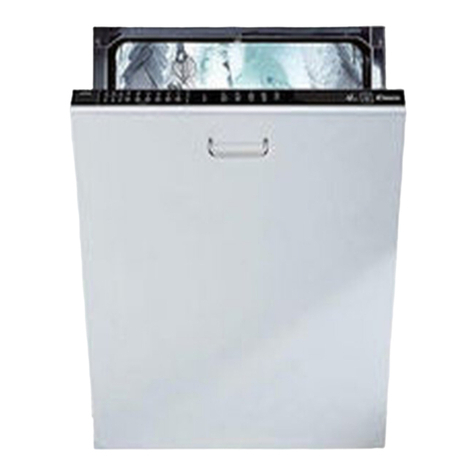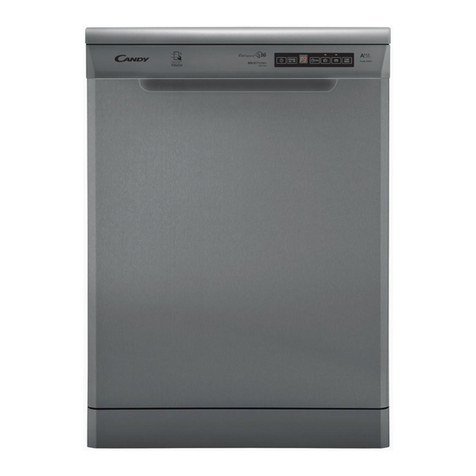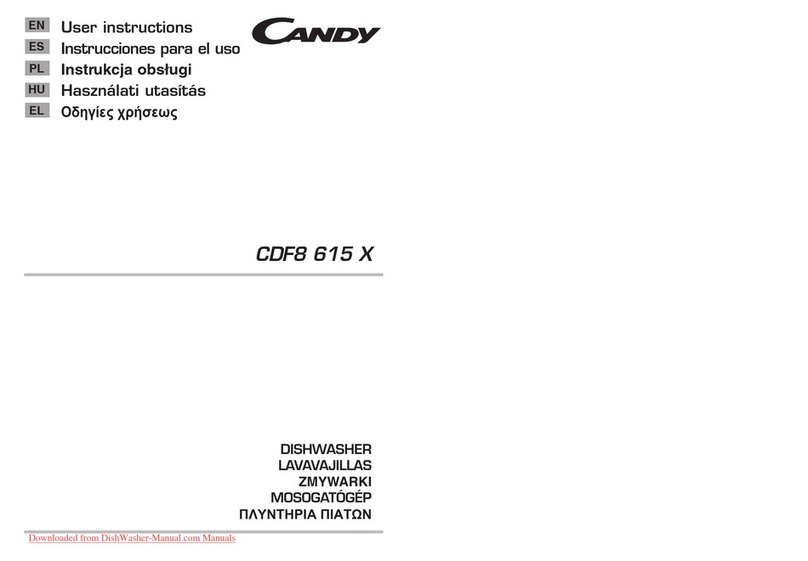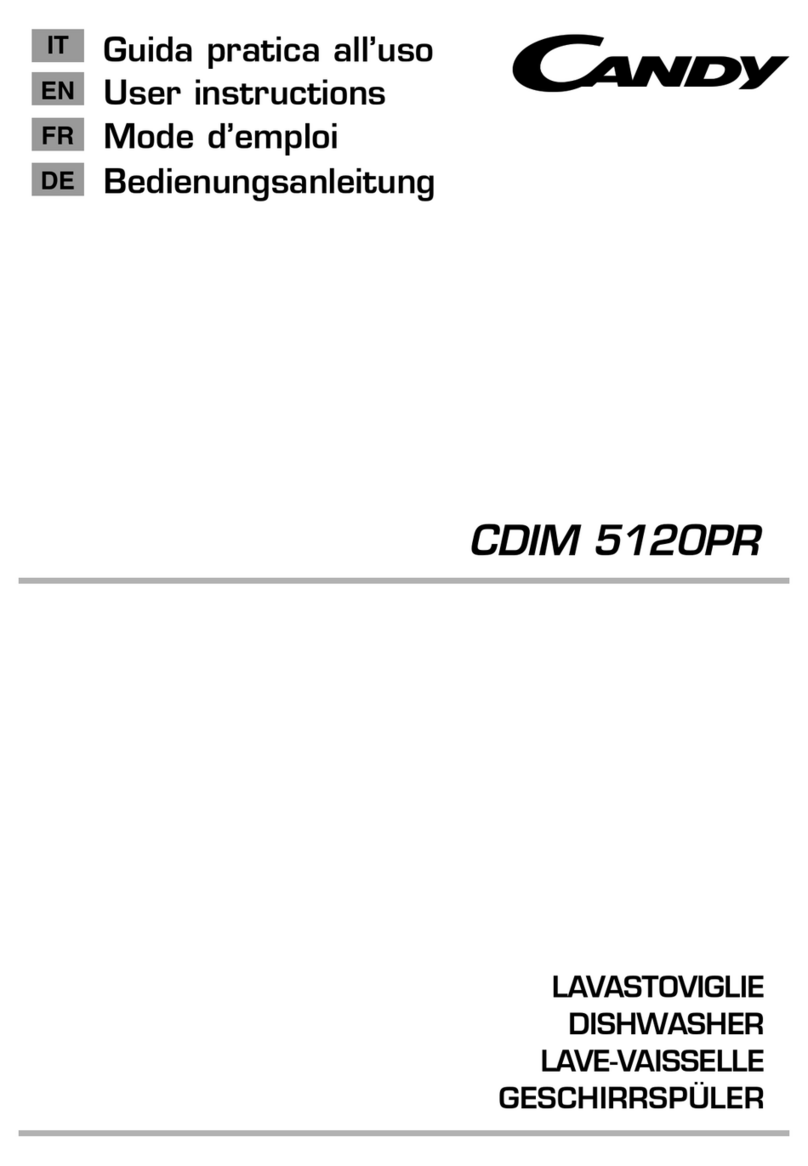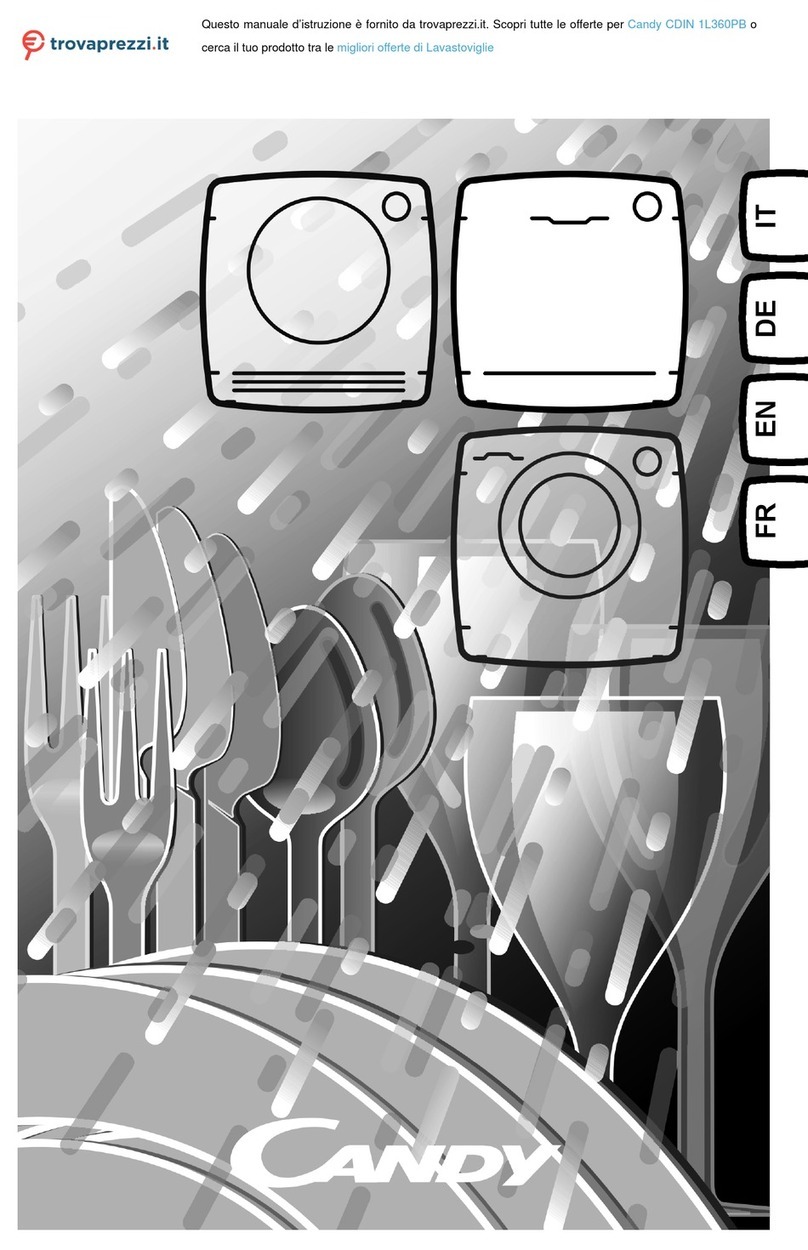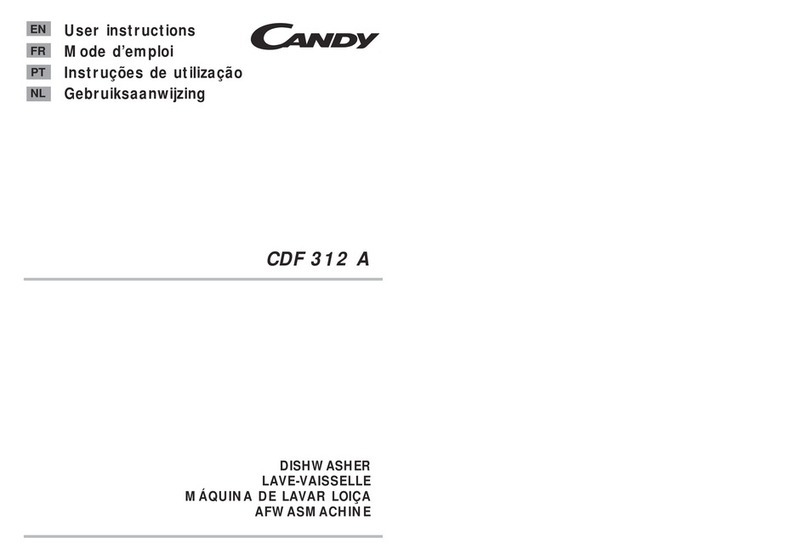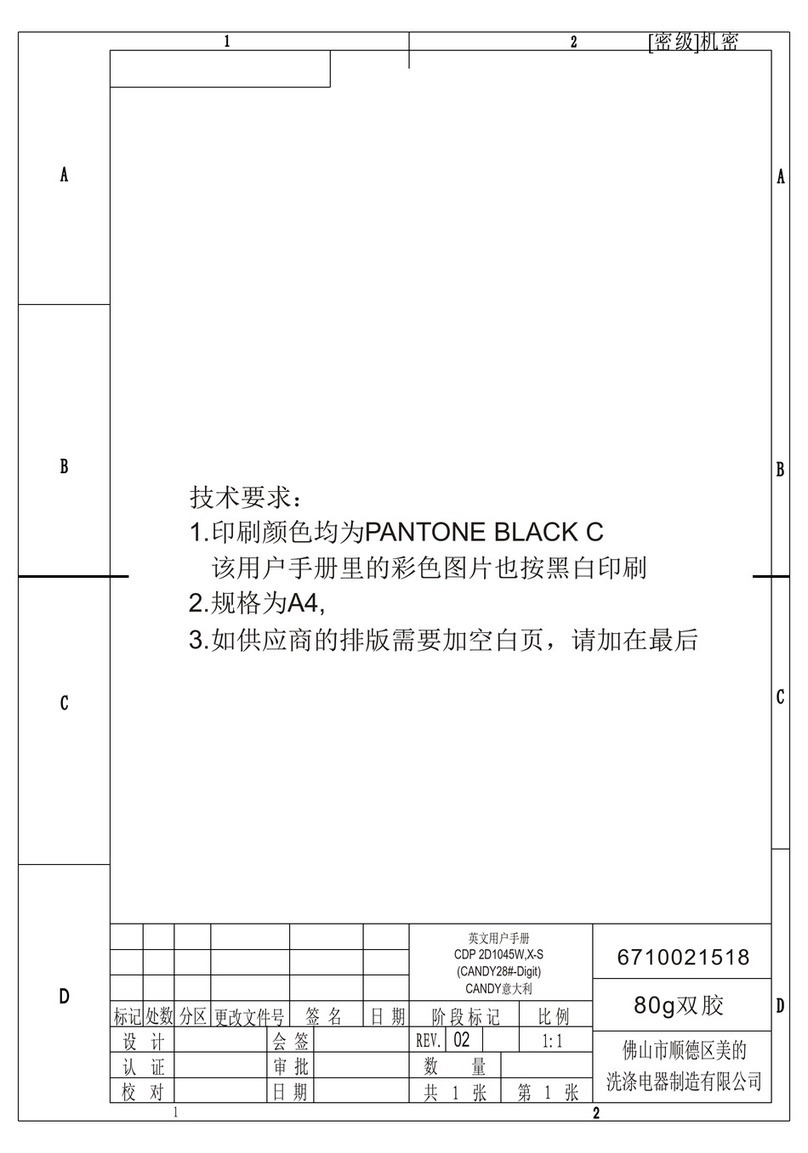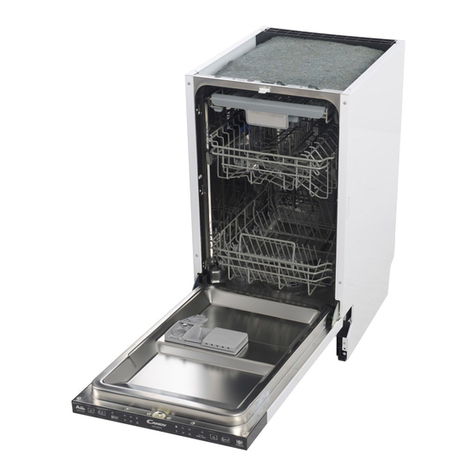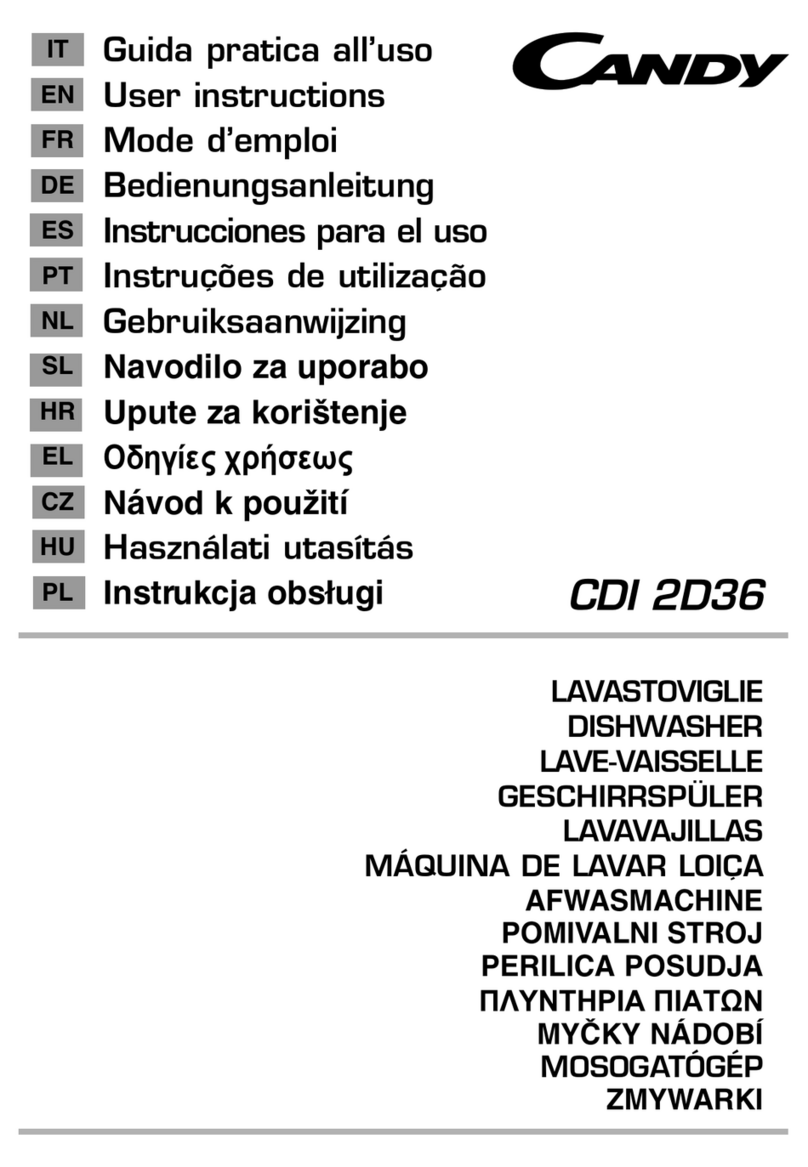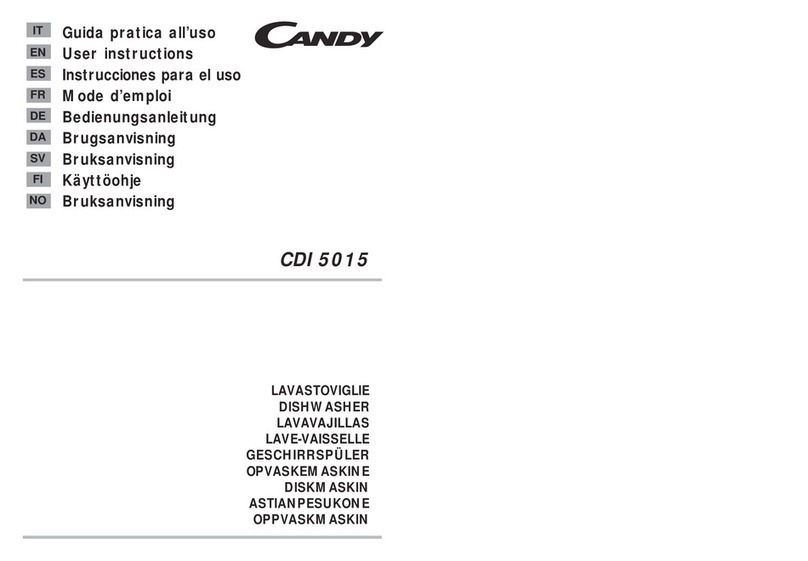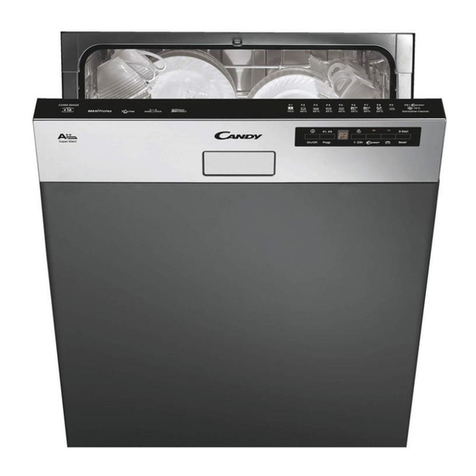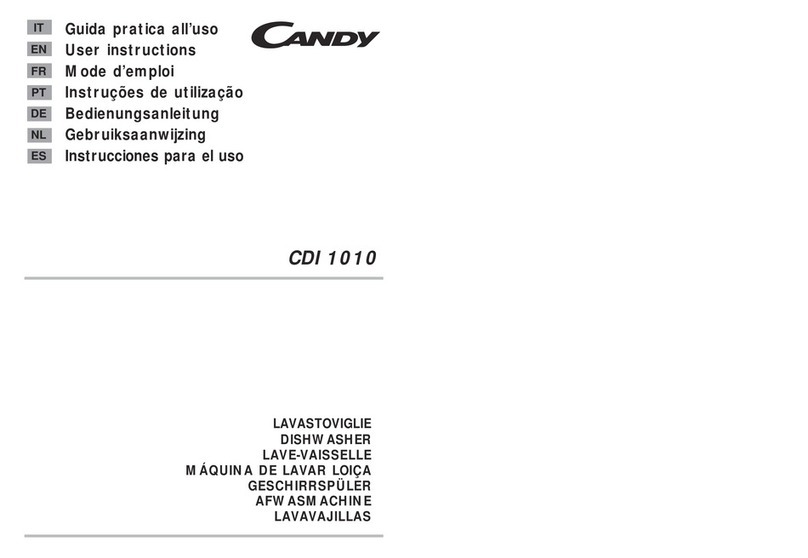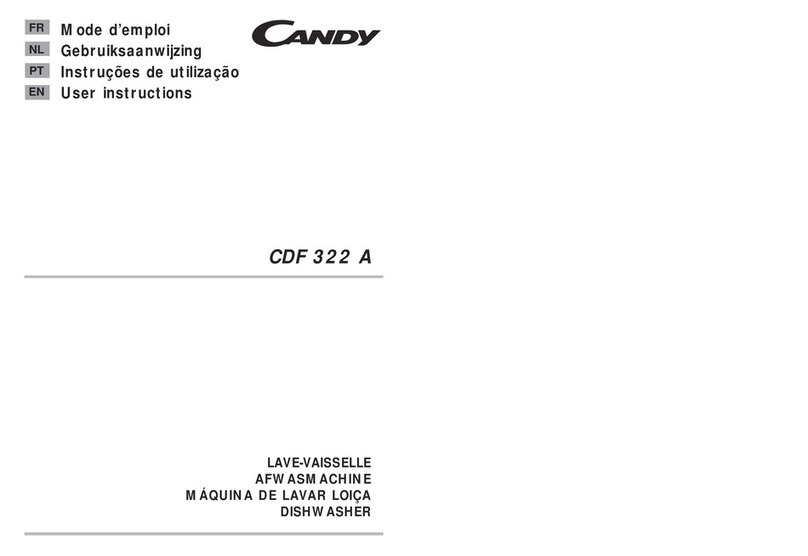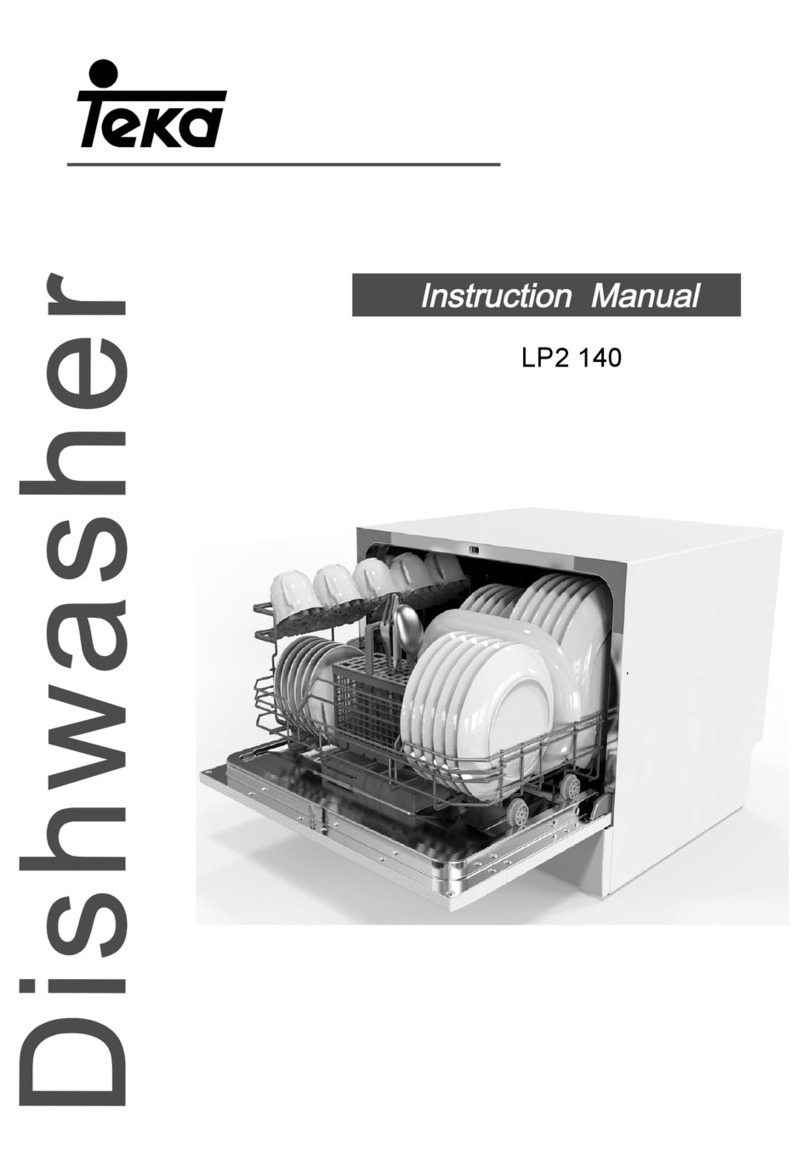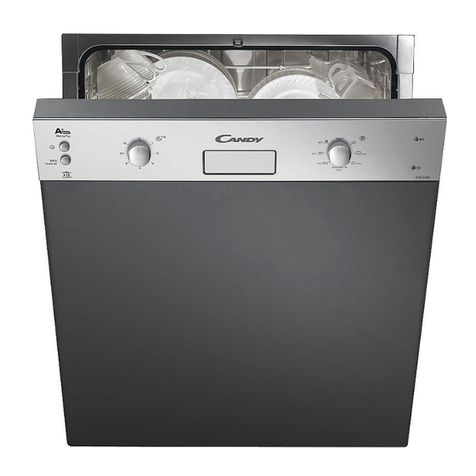
"WARNING"
THIS APPLIANCE MUST BE EARTHED
Fuses and plugs
This appliance should be used only on a
socket with a minimum rating of 13 Amp.
Our ready-fitted plug is already equipped
with a 13 amp fuse which is BS 1362 ASTA approved.
Any replacement should be exactly the same.
If the fuse cover is lost, do not use the plug until it is replaced.
A correct replacement fuse cover (obtainable from your dealer
or Electricity Board) must be the same colour as shown or na-
med on the insert on the base of the plug.
46
Installation in fitted kitchens
Fitting between existing cabinets
Theheightofthedishwasher,85cm.,hasbeendesignedinorder
toallowthemachine to be fitted betweenexistingcabinetsofthe
same height in modern fitted kitchens. The feet can be adjusted
so that correct height is reached.
Thelaminated topofthemachinedoesnotrequireanyparticular
care since it is heatproof, scratchproof and stainproof (fig. 5).
The working top can be easily adjusted to line it with the top of
existingcabinets;thisisdonebymovingitby5mm.eachtimeup
to a maximum of 25 mm.
To adjust it, unscrew the two screws at the back and fix the top
in the position required (fig. 7).
Underneath existing working top
Inmostmodernfittedkitchensthereisonlyonesingleworkingtop
under which cabinets and electrical appliances are fitted.
Inthiscase removetheworking topofthe dishwasherbyunscre-
wing the screws under the rear edge of the top (fig. 7).
Theheightwillthenbereducedto82cm.,asscheduledbytheIn-
ternationalRegulations(ISO)andthedishwasherwillfitperfectly
under the kitchen working top (fig. 6).
Fitting panels (some models only)
The frames around the door, present only in some models, allow
decorative panels to be fitted, up to 5 mm. thick, and with the
following dimensions:
width 591 mm. ±1
height 597 mm. ±1
47
Water connection
The inlet and drain hoses can be directed to left or right.
The dishwasher can be connected to either cold or hot water,
as long as it is no hotter than 60 °C.
Water pressure must be between 0,08 MPa and 0,8 MPa. If the
pressureisbelowtheminimumconsultourservicedepartmentfor
advice.
Theinlet hosemust beconnected toa tapsothatthewatersupply
can be cut off when the machine is not in use (fig.1 B).
The dishwasher is fitted with 3/4" threaded connector (fig. 2).
ConnectinlethoseAtowatertapBwith a3/4"attachmentmaking
sure that it has been properly tightened.
If calcareous deposits or sand are present in the water, it is
advisable to obtain the appropriate filter, art. 9226085, from the
Service Centre (fig. 3).
The filter Dmust be inserted between the tap Band the inlet hose
A, remembering to fit the washer C.
Ifthedishwasherisconnectedtonewpipesortopipeswhichhave
notbeenin usefora longtimerun waterthroughfor afewminutes
before connecting the inlet hose. In this way no deposits of sand
or rust will clog up the water inflow filter.
Connecting the outlet hose
Theoutlethoseshoulddishargeintoastandpipe,makingsurethat
there are no kinks (fig. 4).
The standpipe must not be less than 40 cm. above floor level and
itmusthaveaninternaldiameterofatleast4cm.Itisadvisableto
fit an anti-odour air trap (fig. 4 x).
Ifnecessarytheoutlethosecanbeextendedupto2,6m,provided
that it is kept at a maximum height of 85 cm. above floor level.
The hose can be hooked over the side of the sink (it must not be
immersedin water,inordertoprevent waterfrom beingsyphoned
back to the machine when this is in operation) (fig. 4 y).
Wheninstallingtheapplianceunderaworktopthehosepipeclamp
mustbeattached to thewallin the highestpossibleposition under
the worktop (fig. 4 z).
Check that there are no kinks in the inlet and outlet hoses.
If it is necessary to lengthen the inlet pipe, an extension pipe can
be fitted.

